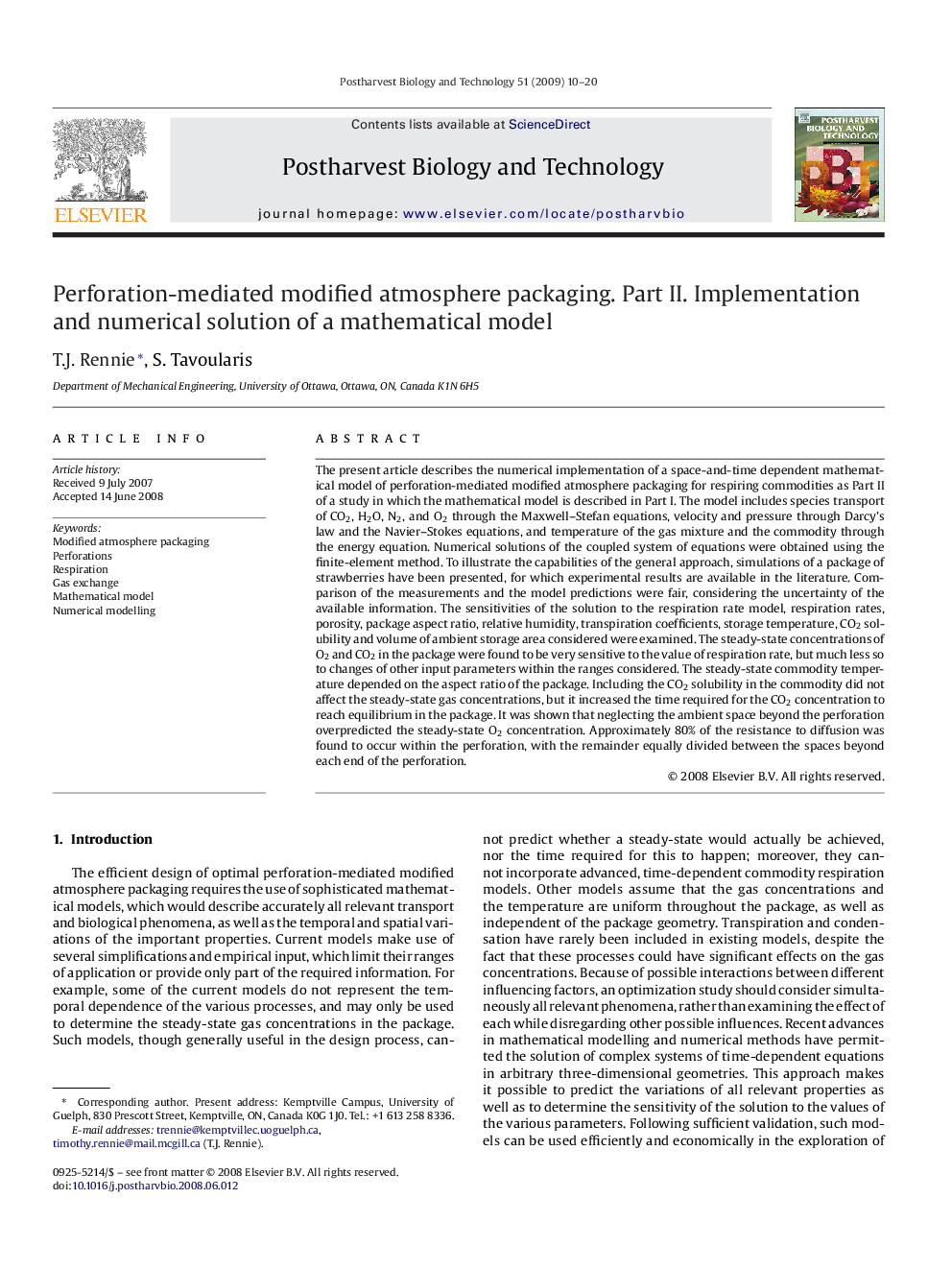| Article ID | Journal | Published Year | Pages | File Type |
|---|---|---|---|---|
| 4519276 | Postharvest Biology and Technology | 2009 | 11 Pages |
The present article describes the numerical implementation of a space-and-time dependent mathematical model of perforation-mediated modified atmosphere packaging for respiring commodities as Part II of a study in which the mathematical model is described in Part I. The model includes species transport of CO2, H2O, N2, and O2 through the Maxwell–Stefan equations, velocity and pressure through Darcy's law and the Navier–Stokes equations, and temperature of the gas mixture and the commodity through the energy equation. Numerical solutions of the coupled system of equations were obtained using the finite-element method. To illustrate the capabilities of the general approach, simulations of a package of strawberries have been presented, for which experimental results are available in the literature. Comparison of the measurements and the model predictions were fair, considering the uncertainty of the available information. The sensitivities of the solution to the respiration rate model, respiration rates, porosity, package aspect ratio, relative humidity, transpiration coefficients, storage temperature, CO2 solubility and volume of ambient storage area considered were examined. The steady-state concentrations of O2 and CO2 in the package were found to be very sensitive to the value of respiration rate, but much less so to changes of other input parameters within the ranges considered. The steady-state commodity temperature depended on the aspect ratio of the package. Including the CO2 solubility in the commodity did not affect the steady-state gas concentrations, but it increased the time required for the CO2 concentration to reach equilibrium in the package. It was shown that neglecting the ambient space beyond the perforation overpredicted the steady-state O2 concentration. Approximately 80% of the resistance to diffusion was found to occur within the perforation, with the remainder equally divided between the spaces beyond each end of the perforation.
